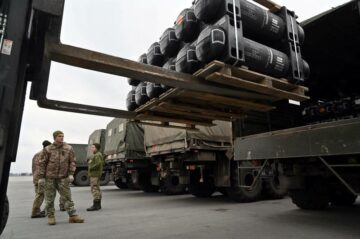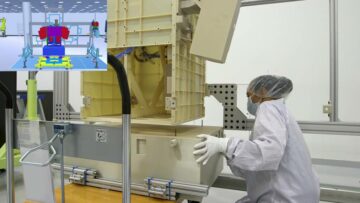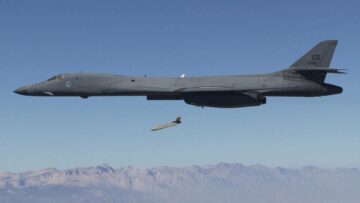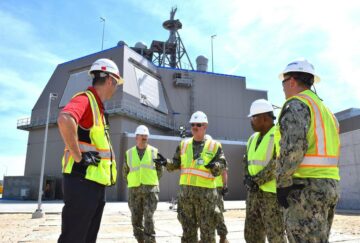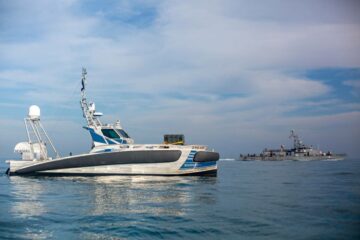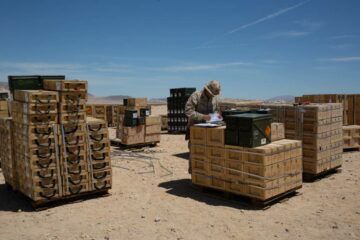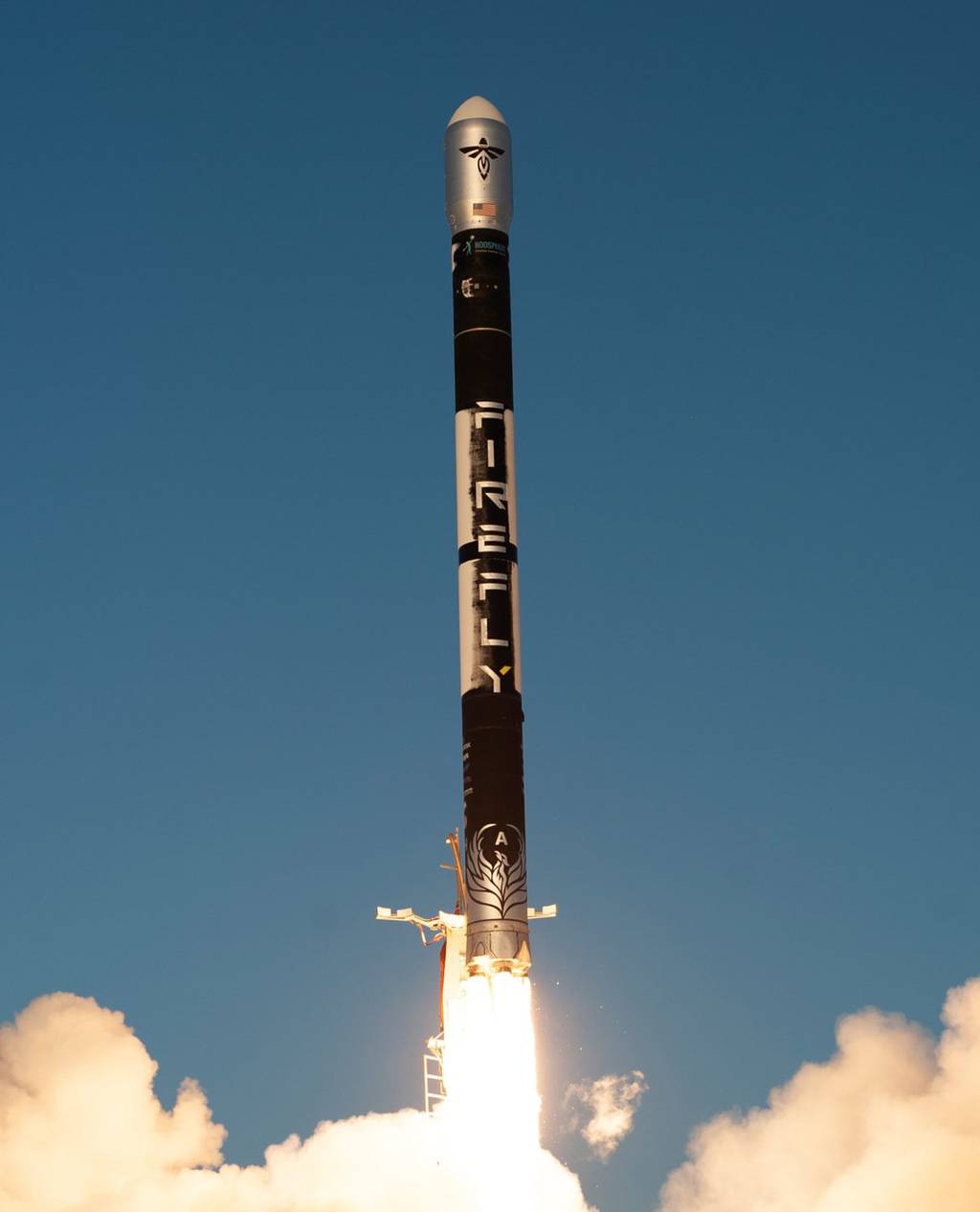
WASHINGTON — The U.S. Space Force put its Victus Nox launch and satellite providers on call for a highly anticipated responsive space demonstration, notifying the companies that a 24-hour delivery window could open at any moment.
The Victus Nox mission, Latin for “conquer the night,” will demonstrate the ability to build a satellite, integrate it onto a rocket and place it in orbit on rapid timelines. Satellite manufacturer Millennium Space Systems, a Boeing subsidiary, and the mission’s launch provider Firefly Aerospace have been preparing for the effort since last September. Firefly is under a $17.6 million contract, and Millennium declined to disclose the value of its award.
Now, according to an Aug. 30 statement from Firefly, the companies are in what’s called a “hot standby” phase, which means that sometime within the next six months, the Space Force will request the satellite and rocket be available for launch.
The initial alert will go to Millennium, who will have 60 hours to deliver its satellite to Vandenberg Space Force Base in California, fuel the spacecraft and integrate it onto Firefly’s Alpha rocket’s payload adaptor. Then, 24 hours prior to the mission, the service will call on Firefly to complete its final pre-launch preparations, which includes attaching the payload to its vehicle.
Once on orbit, the company will have two days to make initial contact with the satellite, which will begin performing its space domain awareness mission soon after.
The limited details on timing and the rapid delivery plan are part of the service’s intent for Victus Nox, which aims to mimic as much as possible the operational conditions under which it would use the capability, dubbed Tactically Responsive Space.
The service wants to have an enduring responsive space capability as soon as 2026, which would allow the service to quickly launch satellites into space either to respond to an in-orbit threat or augment a degraded or destroyed system. That could mean having a spare satellite on orbit that could be turned on or maneuvered into position as needed, working with commercial partners to buy data in a crisis or, as in the case of Victus Nox, have a satellite on the ground that’s ready to be launched on demand.
Victus Nox is the Space Force’s second tactically responsive mission. The first flew in 2021 on a Northrop Grumman Pegasus XL rocket. The service is making plans for a third launch, this time working with the Defense Innovation Unit. DIU announced Aug. 24 that the effort, dubbed Victus Haze, would focus on “end-to-end execution using commercial capabilities.”
The agency plans to award contracts for Victus Haze this fall.
Courtney Albon is C4ISRNET’s space and emerging technology reporter. She has covered the U.S. military since 2012, with a focus on the Air Force and Space Force. She has reported on some of the Defense Department’s most significant acquisition, budget and policy challenges.
- SEO Powered Content & PR Distribution. Get Amplified Today.
- PlatoData.Network Vertical Generative Ai. Empower Yourself. Access Here.
- PlatoAiStream. Web3 Intelligence. Knowledge Amplified. Access Here.
- PlatoESG. Automotive / EVs, Carbon, CleanTech, Energy, Environment, Solar, Waste Management. Access Here.
- PlatoHealth. Biotech and Clinical Trials Intelligence. Access Here.
- ChartPrime. Elevate your Trading Game with ChartPrime. Access Here.
- BlockOffsets. Modernizing Environmental Offset Ownership. Access Here.
- Source: https://www.defensenews.com/battlefield-tech/space/2023/08/30/space-force-responsive-space-mission-enters-hot-standby-phase/
- :has
- :is
- 10
- 2012
- 2021
- 2026
- 24
- 30
- 60
- 70
- a
- ability
- acquisition
- Aerospace
- After
- agency
- aims
- AIR
- Air Force
- Alert
- allow
- Alpha
- an
- and
- announced
- Anticipated
- any
- ARE
- AS
- At
- Aug
- available
- award
- awareness
- base
- BE
- been
- begin
- Boeing
- budget
- build
- buy
- california
- call
- called
- capabilities
- capability
- case
- challenges
- commercial
- Companies
- company
- complete
- conditions
- contact
- contract
- contracts
- could
- covered
- crisis
- data
- Days
- Defense
- deliver
- delivery
- Demand
- demonstrate
- destroyed
- details
- Disclose
- domain
- dubbed
- effort
- either
- emerging
- Emerging Technology
- enduring
- Enters
- execution
- Fall
- final
- firefly aerospace
- First
- Focus
- For
- Force
- from
- Fuel
- Go
- Ground
- Have
- having
- highly
- HOURS
- HTTPS
- images
- in
- includes
- initial
- Innovation
- integrate
- intent
- into
- IT
- ITS
- jpg
- Last
- Latin
- launch
- launched
- Limited
- make
- Making
- Manufacturer
- mean
- means
- Military
- Millennium
- million
- Mission
- moment
- months
- most
- much
- needed
- next
- night
- notifying
- nox
- of
- on
- onto
- open
- operational
- or
- Orbit
- part
- partners
- Pegasus
- performing
- phase
- plan
- plans
- plato
- Plato Data Intelligence
- PlatoData
- policy
- position
- possible
- Prior
- provider
- providers
- put
- quickly
- rapid
- ready
- Reported
- reporter
- request
- Respond
- responsive
- rocket
- s
- satellite
- satellites
- Second
- service
- she
- significant
- since
- SIX
- Six months
- some
- Soon
- Space
- Space Force
- spacecraft
- Statement
- subsidiary
- system
- Systems
- Technology
- that
- The
- then
- Third
- this
- threat
- time
- timing
- to
- Turned
- two
- u.s.
- U.S. Space Force
- under
- unit
- use
- using
- value
- vehicle
- wants
- which
- WHO
- will
- window
- with
- within
- working
- would
- zephyrnet

